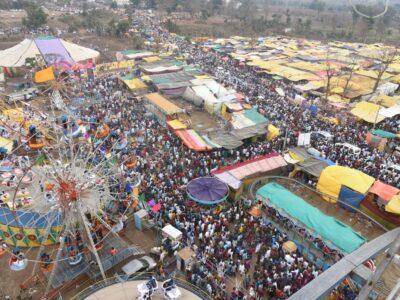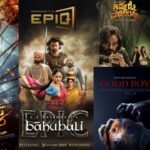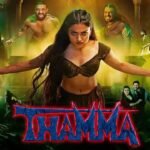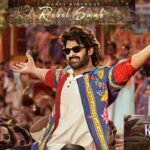Why CM Revanth Reddy’s Promise of Development important for Nagoba Temple!
Preparations are in full swing at the famous Nagoba temple in Keslapur, Adilabad, for the Maha Jatara that will start from February 9 on Pushya Amavasya. CM Revanth Reddy’s visit and his promise of development adds to the buzz
Story by Rajeshwari Kalyanam & Kausalya Suharika R with inputs from Sumanaspati Reddy, former Director, All India Radio.

Gonds are not just tribals, they also had a great legacy, their own culture, and empire – completing the magnificent Nagoba temple will be a reaffirmation of their legacy – CM Revanth Reddy’s visit may be a step in that direction
Keslapur, a hamlet nestled in the forests of Indravelli Mandal of Adilabad district near Asifabad is famous for its Nagoba temple. The temple dedicated to Nagoba, the serpent God Sesh Nag is especially brimming with devotees around this time of the year. Preparations are in full swing at the famous Nagoba temple, which is gearing up for the Maha Jatara that will start from February 9 on Pushya Amavasya – the new moon day. While it does become the epicentre of devotion which is in fact an annual phenomenon around this time of the year; a visit from the Chief Minister of Telangana, Revanth Reddy, no less – has made the buzz louder.

Especially since CM laid the foundation for several development and construction works at the Nagoba temple including initiating Gopuram works at 5 cr. Not to mention a foundation stone for Smritivanam – a memorial commemorating the tribals who died in the tragic police shoot out in 1981.
Revanth Reddy’s first public address after he became the TPCC President was from here. And evidently, Keslapur’s Nagoba temple holds a special place in his heart. And, that also explains he launching the Congress campaign for the upcoming General elections during his latest visit.

A Slice of History & mythology
Going back into mythological history of the origins of the Gonds of Adilabad, the original forefathers of the present Gonds were first Gods, but after their fall from that state to a human condition, they were divided into four main phrateries or gotras: four, five, six and seven God gotras. Each phrater has many family clans. Each clan got a set of symbolic objects to pray for as their ‘persapen’ or prime gods or deities. The Mesram clan from the seven God phratery however did not get those objects. In the event, they arrived at Seshnag or Nagoba, the serpent god, as their ancestral protector deity. And elaborate mythological story narrated by Pardhans, their bards, describes in great detail these happenings.
Though Nagoba is primarily the ancestral God of the Mesrams, and the main rituals at the Jatara are confined to Buigota Khandan of the Mesram Clan, while most other Gonds also began to visit the Nagoba shrine to pray.
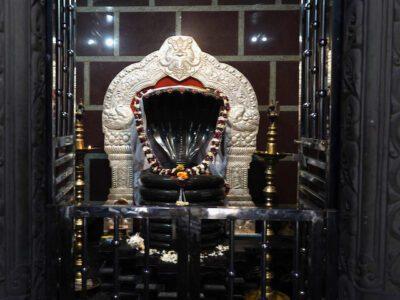
The Raj Gonds of Adilabad
Raj Gonds of Adilabad have their own mythologies of origin. The Raj Gonds are the major adivasis of Adilabad. They are part of the larger Gond tribal community in India. Spread over a large area, you can find Gonds in Madhya Pradesh, Maharashtra, Orissa, Telangana, and even coastal Andhra, and in some parts of Telangana. Majority Gonds speak the Gondian or Koitur language. The various clans amongst the Gonds of different regions have common and also different mythologies with some common connection. Each of them has a primary ancestral god called ‘persapen’

For the Mesram clan who are from Adilabad – the serpent God – Nagoba is the Persa Pen and the 9-day rituals of Nagoba Jatara hold a lot of importance for them. In fact, the actual rituals start days ahead of the actual Jatara.
Elaborate Rituals of Nagoba Jatara
“Mesram sub-clan’s population is rather big amongst the Gonds, and they celebrate this jatara. A set of male members of the clan travel barefoot for many kilometers through the forest to collect what they consider the holy water of Godavari. In this almost a month-long journey they first pick up the water, walk through the many villages, where Mesram clan live or their relatives live, and they bring that water to the Nagoba temple in Keslapur in a sacred casket. By then many families, from wherever they are living, whether in Telangana or some parts of Maharashtra also, come by foot, or by bullock carts and off late on automobiles, with all their provisions. They camp near the temple for 9 to 10 days. They visit the temple and pray to Nagoba during these days, apart from performing numerous age-old rituals before going back to their villages. This journey too is a big part of jatara,” Sumanaspati shares more details about the elaborate rituals surrounding Nagoba festival / Jathara.
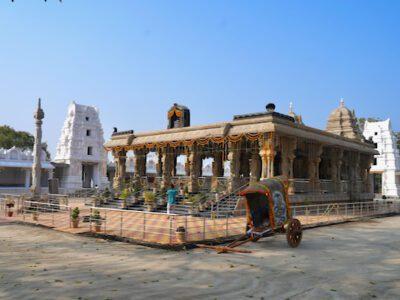
“For the Mesram clan, it is the family festival in the sense that- girls who are married into the clan; they officially become the members of the clan only when they are given the ritualized darshan of the god. It can happen for newly married, after one year, 2 years, 10 years also. There are several other rituals that are followed religiously in a sequence. For example, there is a midnight prayer on day one of the jathara.”
“This tribal festival in addition to Gonds also has many Hindus taking part, especially in the recent past. It is hailed as the biggest tribal fair after Sammakka/ Sarakka jathara. We have people coming from MP, Maharashtra, Orissa, Telangana,” he states.

As part of the festivities, several competitions are held, beautiful presentations of the Gond versions of Ramayana and Mahabharata are presented, mythologies are sung by their ‘bards’ called ‘Pradhan’. It’s also a big time for them to meet. To know about each other, it’s also a meeting place as all the relatives come together, he adds.
The Durbar Tradition
Yet another interesting tradition that has survived the day is the Durbar. Huge number of Raj Gonds come here for an event called the “Durbar”, where the state machinery or the bureaucrats are in attendance, and receive petitions and solve the problems of the tribes. All the tribals come and submit their petitions and requests they have. Administration reaches back to everyone amongst the tribal people. Even though times have changed and roads are built, the durbar continues to be held as a convention.
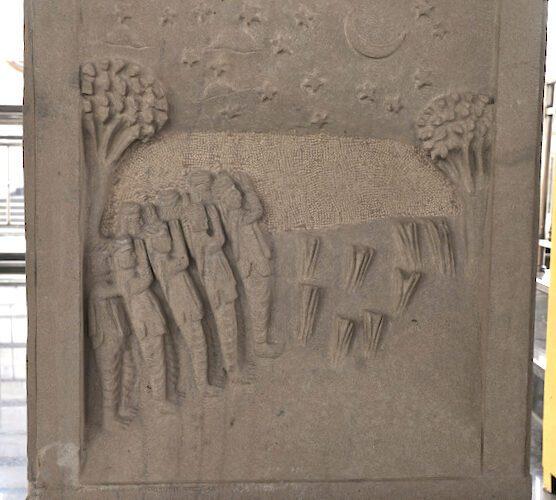
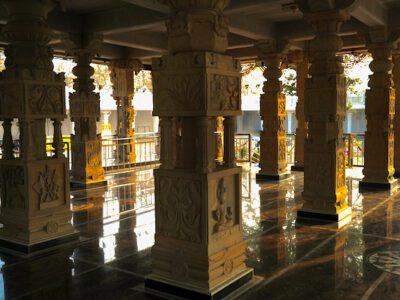
In fact, CM of Telangana too held a Durbar during his visit a week before the jatara. with women from SHGs during his visit.
The New Temple Construction
Building a big new temple of Nagoba is yet another fairly new development. Before the 1970’s, Nagoba temple did not even have a covered roof. Then in the 1970, a small structure was built – a very small temple it was. What is now being built is a really magnificent temple with all the sculptures, beautifully carved, it’s a stone temple, which represents the grandeur of the Gonds.
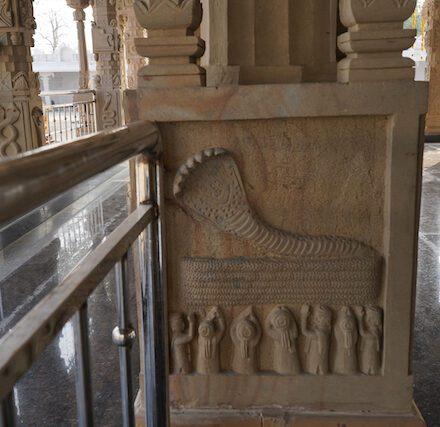
Gonds have had their empires, they were also rulers. Now we look at them as tribals, living in the jungle, even though they got educated. But, in the past, at some time, Gonds were also a ruling clan, their own empire. They also set up big temples. The tribals see the construction of new temple reflective of the glory of the Gonds of the past. They feel it has resurfaced by the building of the new magnificent sculptures’ temple. Some part of the temple is still under construction – it has been going on for 4 or 5 years, and yet some outer parts have to be completed. The new temple is like the reaffirmation of the ancient glory of Gonds. They are not just tribals, they also had a great legacy, of own culture, and had their own empire.
The new temple is like the reaffirmation of the ancient glory of Gonds.
– relates Sumanaspathi who has closely seen the temple, the rituals and life of Adilabad Gonds.



